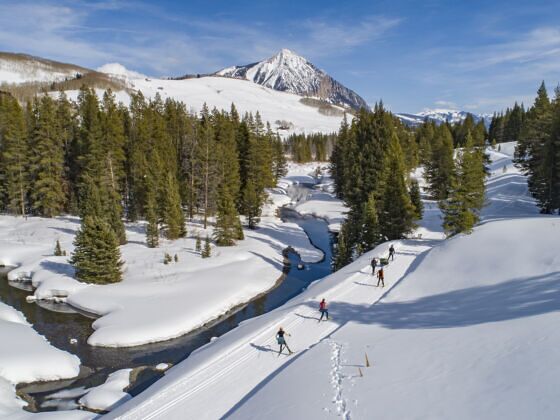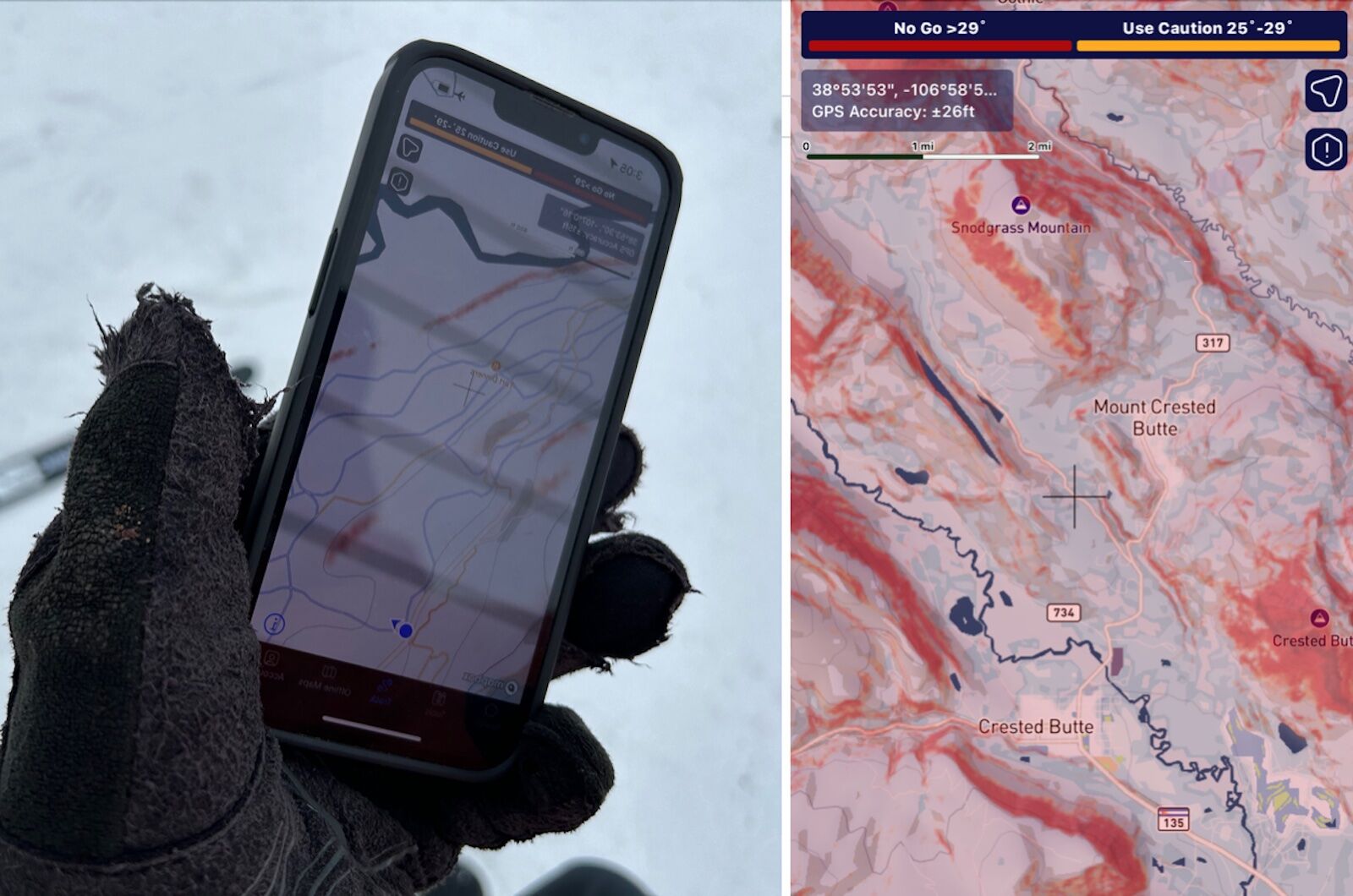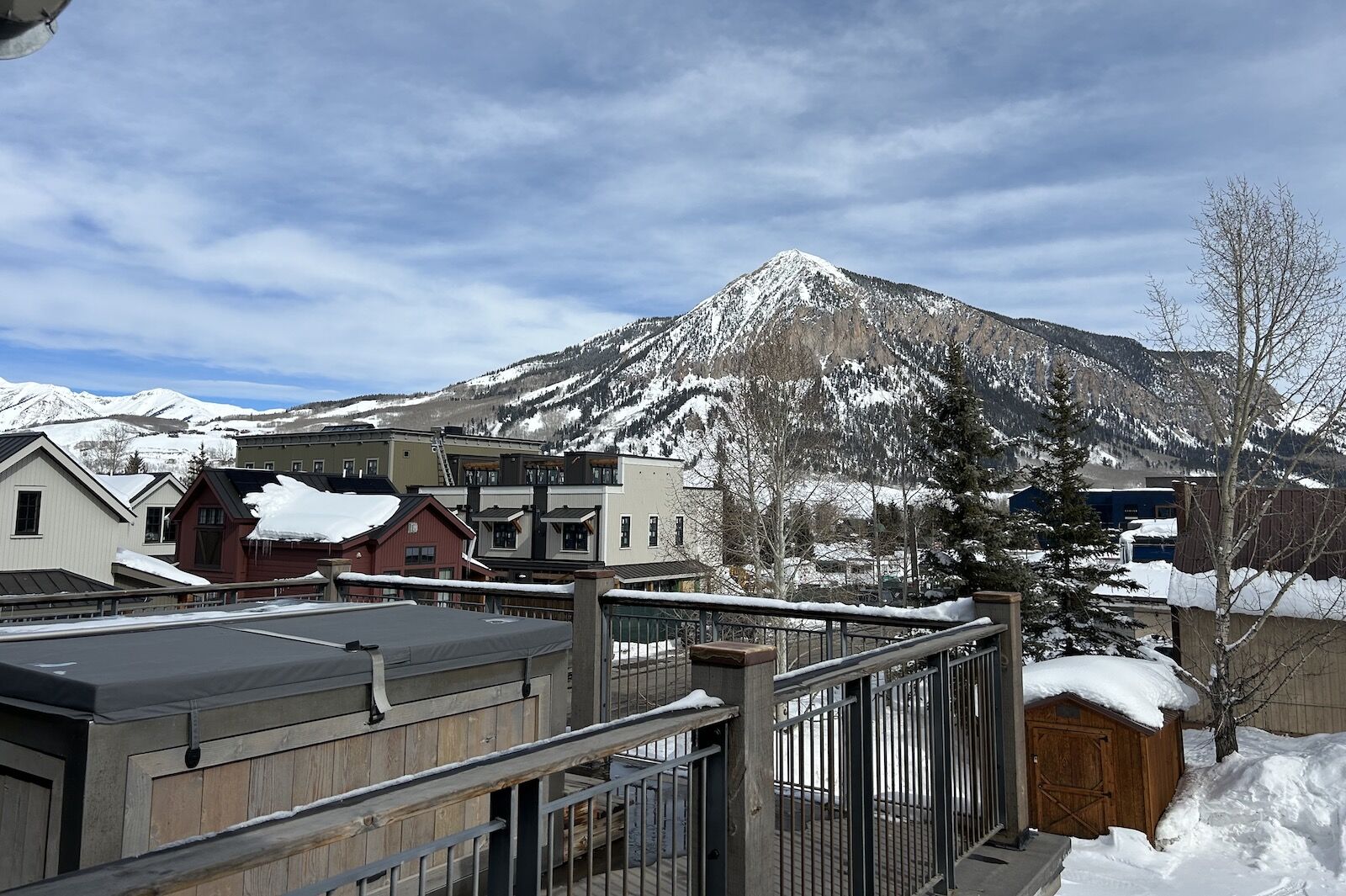Crested Butte, Colorado, is the perfect combination of a Hallmark holiday movie town and a mountain destination with adventures as insane as Candide Thovex’s sickest ski video. Crested Butte — known both as “Colorado’s Last Great Ski Town” and “The Wildflower Capital of Colorado” — has some of the best lift-served extreme terrain in the nation.

How to Venture Deep Into Crested Butte’s Backcountry (And Not Get Caught in a Deadly Avalanche)
Beyond the lifts, the backcountry is legendary. There are myriad ways to explore the backcountry, but my favorite is on Nordic, or cross-country, skis. I feel alone with the sky and the snow, gliding on tracks, my skin growing warm as I move. On Nordic skis, I can get deep into the mountains and reach backcountry huts that offer little more than bunks or newer luxury properties hidden deep in the mountains, some of which are inaccessible by car.
But as sparkling and inviting as the mountain terrain seems, it’s dangerous as hell if you don’t know what you’re doing — and not everyone can afford a private guide. Recent deadly avalanches in Palisades, Tahoe, have reminded skiers worldwide of snow hazards.
As much as staying put in charming Crested Butte town appeals, I knew I wanted to get out — way out — on my recent visit. This left me wondering: How can I venture into the backcountry while respecting its awesome power to kill me in an avalanche?
Venturing safely into the backcountry with AspectAvy
Before deciding where to Nordic ski in Crested Butte, I met up with Jeff Banks, a certified International Federation of Mountain Guides Associations (IFMGA) guide and avalanche survivor who has taught avalanche safety courses for over 20 years in Europe and the US. He’s trained Special Forces, mountain guides, and outdoor enthusiasts who want adventure without fear. Banks lives in downtown Crested Butte and told me that he, like many who live in mountain towns, has experience with both the joys of snow adventures and the possible tragedies.
A near-death experience led Banks to conceive of an app called AspectAvy, which debuted this winter. Banks told me, “Like most of us who travel in the backcountry, I have lost numerous friends and colleagues to avalanches. It seems surreal, until it happens to you.”

Photo: Amanda Ward
In April 2010, Banks was touring up the Ortler Range, just above Sulden, Italy, where about 40 guides and their clients had crossed for days. “My colleague was about five minutes ahead of me with the other clients, on the same slope, when the snow fractured at my feet,” says Banks. “I knew we were dead.”
Tied together, Jeff and his group went over three cliff bands for about 1,800 vertical feet. “Miraculously,” he says, “we skied away unscathed and stopped at the hut for a much-needed beer.”
But this near-death experience led Jeff to question why he — and all the other guides — made the mistake of skiing unsafe terrain. He committed himself to finding a better way.
“In building AspectAvy, we looked at data no one has before — analyzed it completely differently and came to radically different conclusions about how to keep adventurers safe in avalanche terrain.”
AspectAvy takes in spatial topography data and integrates it with daily avalanche reports, calculating risk for areas based on local topography. It’s a step toward safer backcountry use for novice and expert adventurers.

Photo: Amanda Ward
When it came time for my own backcountry adventure in Crested Butte, we parked northwest of town at a popular trailhead for some of the over 30 miles of Nordic trails in the valley. We clipped into our skis, and the fun began. The sun was bright, the steep slopes of Mount Emmons rose to our left, and many avalanche chutes were visible. We pulled out our phones and opened the AspectAvy app, acknowledging quickly that those slopes were too hazardous for skiing that day, and that the runout from the ridge would not have enough energy to reach our path in the valley. The AspectAvy app allowed us to think less about risk and more about enjoying our ski day.
The second day, we’d planned to ski out to the town of Gothic, but when we pulled out our phones to check AspectAvy, we realized that the trail was too close to the red colors on the map, showing that the avalanche risk was too proximal to our planned route. Scanning the map on the AspectAvy app, we quickly pivoted to another route in the adjacent Washington Gulch valley where the risk was low. We skied up the valley past Snodgrass Mountain, with glorious Gothic peak rising in the distance.
As we headed into a stunning alpine forest, it was nice to know our risk of avalanche exposure was low. It allowed us to enjoy more chatting and admiring nature and less navigating and route discussion. We could even check during our ski session to make sure we were on the safest route, as the AspectAvy app saves both previous skis and planned skis.
Gearing up for Crested Butte’s backcountry
To prepare for a backcountry ski, pack layers. On the first day we headed out, it was 20 degrees Fahrenheit and sunny, so I opted for a compression top with a down vest and down jacket, compression pants, and socks (CEP is a good brand for compression gear). When it’s super cold, I’ll add a fur hat, but for my Crested Butte foray, a wool hat did the trick. When I cross-country ski, my body heats up, but my ears stay cold. Sunglasses are a must with the bright snow, and I noticed that more experienced locals seemed to be wearing baseball caps, sunglasses, the hood of their jackets pulled up over their ears, and a buff (a neck tube that can double as a face cover), so they were better shielded from both the cold and the sun.

Photo: Amanda Ward
Backcountry skiing also requires the right skis, whether you’re touring or going cross-country, as I did. In Crested Butte, the rockstar backcountry adventurers treat themselves to ROMP skis, which are handmade right in town. With both custom and stock models for touring, freeride, all-mountain, and other ski types, there’s a perfect ROMP ski for every skier. Some models are the lightest I’ve ever admired (paulownia wood). This is ideal for the Grand Traverse, a 40-mile ski competition between Crested Butte and Aspen that’s happening in March, an event I know I would never attempt without those skis or the AspectAvy app.
Where to stay and après in Crested Butte
Crested Butte’s backcountry may be legendary, but Crested Butte town still feels like a secret, with a walkable downtown and locals who are happy to tell you where you can see a moose on your afternoon ski or where to grab the best pizza or hear some music. (For a moose sighting, head to Slate River. For pizza, go to Secret Stash and get the Notorious F.I.G. Local tunes can be found at The Public House, and you can get in the mood by checking out its Spotify playlist.)

Photo: Amanda Ward
During my stay, I checked into a stunning new Crested Butte property, The Vaquera House. (Vaquera translates to “cowgirl.”) A luxury 10-room property, The Vaquera House has a hot tub, gear room, fireplace, pool table, and chef-made breakfast and happy hour treats each evening. The Vaquera House was like staying in your most stylish friend’s home — if your friend had a personal chef, beautiful couches with deep pillows, heated oak floorboards, and a fabulous art collection. (By the way, in ski country, happy hour snacks are called après, as in après-ski. One night, our après was a delectable artichoke dip, and the next evening, we savored nuts, pretzels, chips, and salsa. Guests can enjoy the stocked beer and wine fridge, tea, and coffee.
Crested Butte also has many fantastic restaurants, from the lowkey but delicious sandwiches and empanadas at Frank’s Deli, to a big night out steak at Elk Avenue Prime, to fresh salads and bánh mì sandwiches at The Hideout Bar + Kitchen.
How to get to Crested Butte

Photo: Danica Bona/Sweet Tea Studios
Crested Butte is off the beaten track. You can’t fly directly into this town of 1,600 or so residents, but there’s an airport in Gunnison, Colorado, that’s about a 30-minute drive away, as well as a shuttle service into town via The Mountain Express bus. Crested Butte is a four-hour drive from Denver.